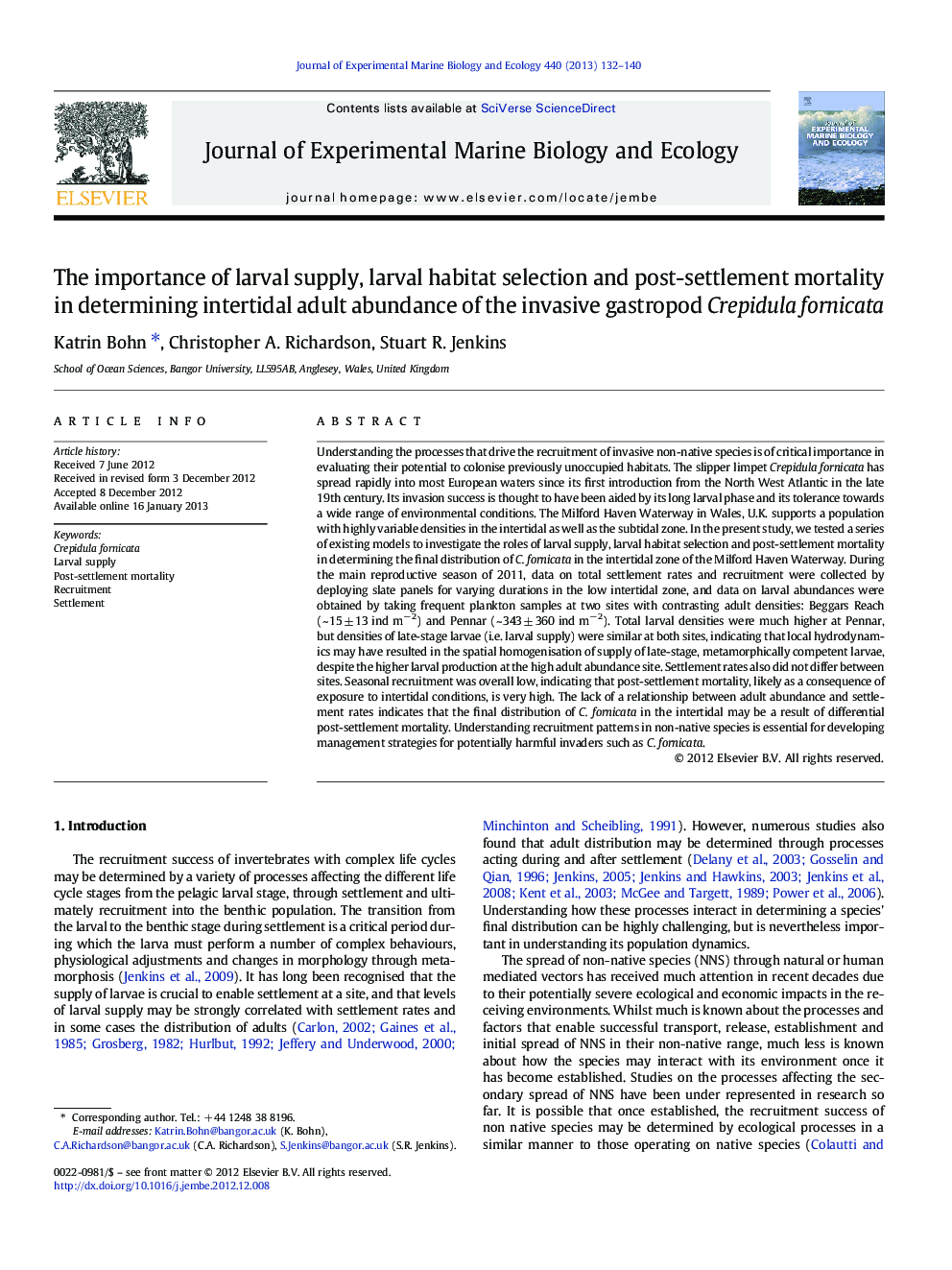| کد مقاله | کد نشریه | سال انتشار | مقاله انگلیسی | نسخه تمام متن |
|---|---|---|---|---|
| 4395810 | 1618435 | 2013 | 9 صفحه PDF | دانلود رایگان |

Understanding the processes that drive the recruitment of invasive non-native species is of critical importance in evaluating their potential to colonise previously unoccupied habitats. The slipper limpet Crepidula fornicata has spread rapidly into most European waters since its first introduction from the North West Atlantic in the late 19th century. Its invasion success is thought to have been aided by its long larval phase and its tolerance towards a wide range of environmental conditions. The Milford Haven Waterway in Wales, U.K. supports a population with highly variable densities in the intertidal as well as the subtidal zone. In the present study, we tested a series of existing models to investigate the roles of larval supply, larval habitat selection and post-settlement mortality in determining the final distribution of C. fornicata in the intertidal zone of the Milford Haven Waterway. During the main reproductive season of 2011, data on total settlement rates and recruitment were collected by deploying slate panels for varying durations in the low intertidal zone, and data on larval abundances were obtained by taking frequent plankton samples at two sites with contrasting adult densities: Beggars Reach (~ 15 ± 13 ind m− 2) and Pennar (~ 343 ± 360 ind m− 2). Total larval densities were much higher at Pennar, but densities of late-stage larvae (i.e. larval supply) were similar at both sites, indicating that local hydrodynamics may have resulted in the spatial homogenisation of supply of late-stage, metamorphically competent larvae, despite the higher larval production at the high adult abundance site. Settlement rates also did not differ between sites. Seasonal recruitment was overall low, indicating that post-settlement mortality, likely as a consequence of exposure to intertidal conditions, is very high. The lack of a relationship between adult abundance and settlement rates indicates that the final distribution of C. fornicata in the intertidal may be a result of differential post-settlement mortality. Understanding recruitment patterns in non-native species is essential for developing management strategies for potentially harmful invaders such as C. fornicata.
► Processes determining intertidal distributions of Crepidula fornicata were studied.
► Larval supply and settlement behaviour did not determine its final distribution.
► Post-settlement mortality limits intertidal recruitment, restricting local abundances.
► Microhabitat availability may attenuate high post-settlement mortality.
Journal: Journal of Experimental Marine Biology and Ecology - Volume 440, February 2013, Pages 132–140